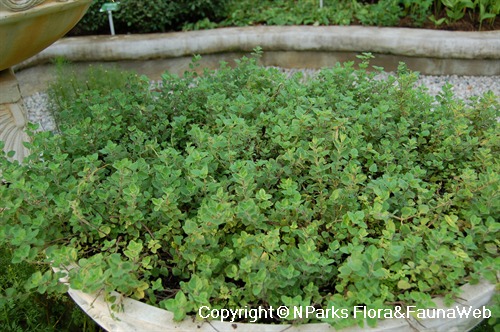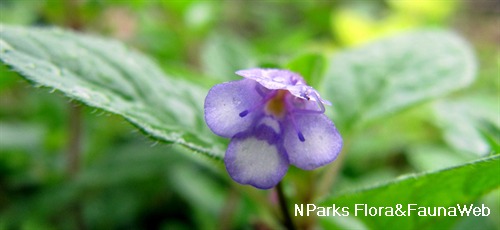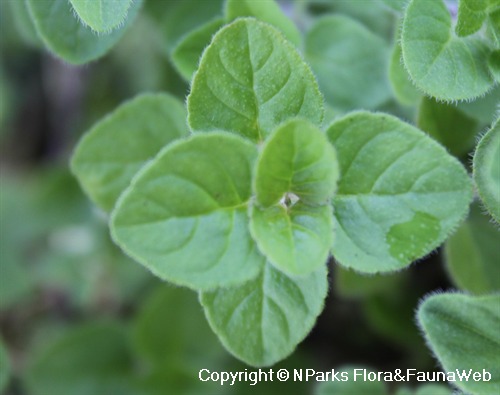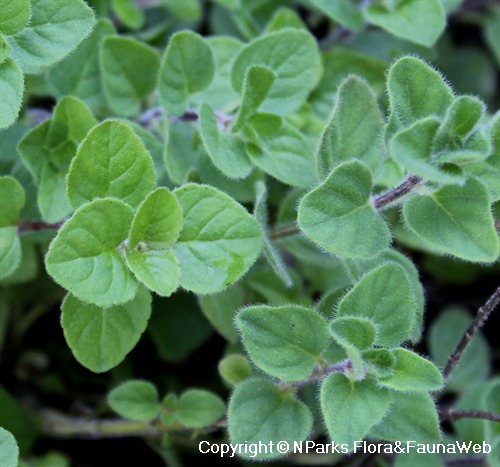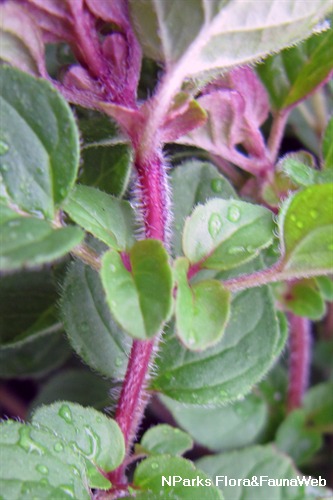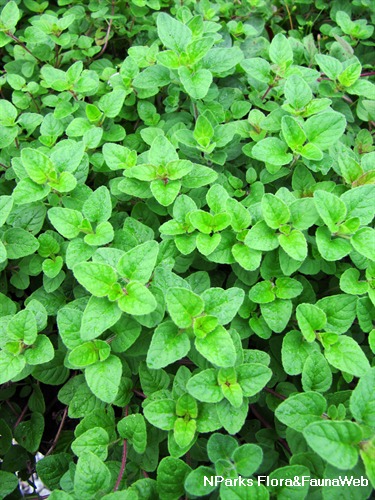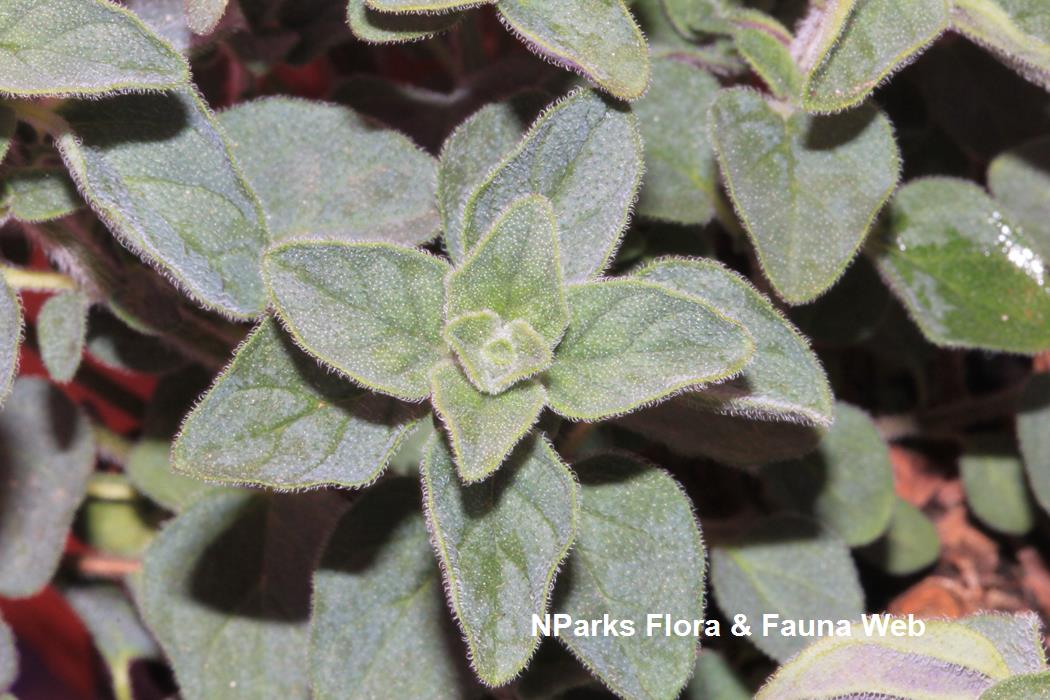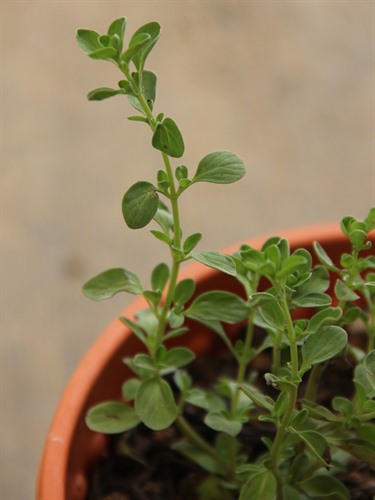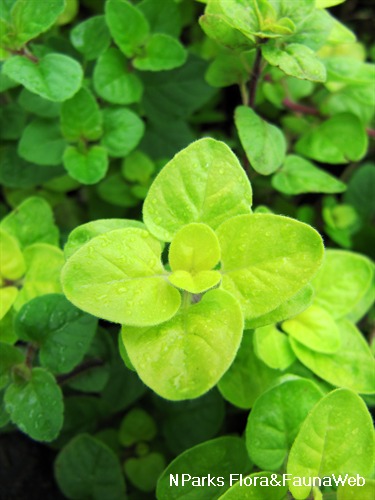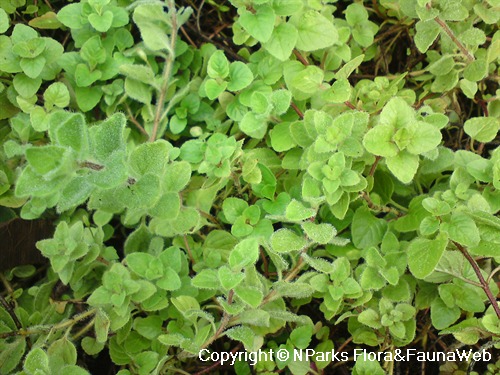
Back
Origanum vulgare L.
| Family Name: | Lamiaceae (Labiatae) |
| Synonyms: | Origanum floridum, Thymus origanum |
| Common Name: | Oregano |
Oregano (Origanum vulgare) is a sprawling woody shrub which can grow up to 1 m tall. Popularly used as culinary herb in Italian cuisine, dried Oregano leaves are also used in traditional medicine for treating colds, indigestion and upset stomach, because of the high carvacrol and thymol content naturally found within its essential oil. The plant is easy to care for, best grown in full sun and well-drained soil.
Name
Classifications and Characteristics
| Plant Division | Angiosperms (Flowering Seed Plants) (Dicotyledon) |
|---|---|
| Plant Growth Form | Shrub |
| Lifespan (in Singapore) | Perennial |
| Plant Shape | Shrubby |
Biogeography
| Native Distribution | Europe, Asia. |
|---|---|
| Native Habitat | Terrestrial |
| Preferred Climate Zone | Sub-Tropical / Monsoonal, Temperate |
| Local Conservation Status | Non-native |
Description and Ethnobotany
| Growth Form | Woody perennial with a sprawling growth habit up to 1 m tall. |
|---|---|
| Foliage | Hairy to hairless leaves are ovate (egg-shaped) to approximately round (0.6-4 cm long, 0.5-3 cm wide). Leaf margin is entire (smooth edges) or serrulate (lined with minute, inconspicuous teeth). |
| Flowers | Purple, pink or white, bisexual flowers are tubular and 2-lipped. |
| Fruit | The fruit is composed of 4 brown, egg-shaped nutlets (1-1.5 mm long, 0.5 mm wide). |
| Ethnobotanical Uses | Edible Plant Parts : Edible Leaves Food (Herb or Spice): The spice oregano sold in supermarkets is actually a blend of several herbs which includes oregano (Origanum vulgare), sweet marjoram (Origanum majorana), and spearmint (Mentha spicata). Chili powder also contains some Origanum vulgare leaves. Others: The oil from seeds is used in aromatherapy, perfumes and toiletries. |
Landscaping Features
| Landscape Uses | General, Parks & Gardens, Small Gardens |
|---|
Plant Care and Propagation
| Light Preference | Full Sun |
|---|---|
| Water Preference | Moderate Water, [Remarks] (Too much water will cause root rot.) |
| Plant Growth Rate | Moderate |
| Rootzone Tolerance | Drought Tolerant, Well-Drained Soils, Alkaline high pH Soils |
| Maintenance Requirements | Low |
| Propagation Method | Seed, Stem Cutting (Softwood), Division |
Foliar
| Foliage Retention | Evergreen |
|---|---|
| Mature Foliage Colour(s) | Green |
| Mature Foliage Texture(s) | Smooth, Hairy / Hirsute |
| Foliar Type | Simple / Unifoliate |
| Foliar Arrangement Along Stem | Opposite |
| Foliar Shape(s) | Non-Palm Foliage (Ovate) |
| Foliar Venation | Pinnate / Net |
| Foliar Margin | Entire - Wavy / Undulate |
| Foliar Apex - Tip | Acute, Obtuse |
| Foliar Base | Rounded / Obtuse |
Non - Foliar and Storage
| Stem Type & Modification | Woody |
|---|
Floral (Angiosperm)
| Flower Colour(s) | White, Purple, Pink |
|---|---|
| Flower Texture(s) | Smooth, Gloss / Shiny |
| Flower Grouping | Cluster / Inflorescence |
| Flower Location | Terminal |
| Individual Flower Shape | Tubular |
| Inflorescence Type | Spike |
| Flowering Period | Free-Flowering |
Fruit, Seed and Spore
| Mature Fruit Colour(s) | Brown |
|---|---|
| Fruit Classification | Simple Fruit |
| Fruit Type | Indehiscent Dry Fruit , Nut / Nutlet |
| Seed Quantity Per Fruit | Few (1-5) |
References
| References | de Guzman, C.C. and Siemonsma, J.S. (Editors). 1999. Plant Resources of South-East Asia No 13. Spices. Leiden, the Netherlands: Backhuys Publishers. Lawton, B.P.. 2002. Mints: A Family of Herbs and Ornamentals. USA: Timber Press. 239 pp. |
|---|
Image Repository
Others
| Master ID | 30546 |
|---|---|
| Species ID | 5191 |
| Flora Disclaimer | The information in this website has been compiled from reliable sources, such as reference works on medicinal plants. It is not a substitute for medical advice or treatment and NParks does not purport to provide any medical advice. Readers should always consult his/her physician before using or consuming a plant for medicinal purposes. |

